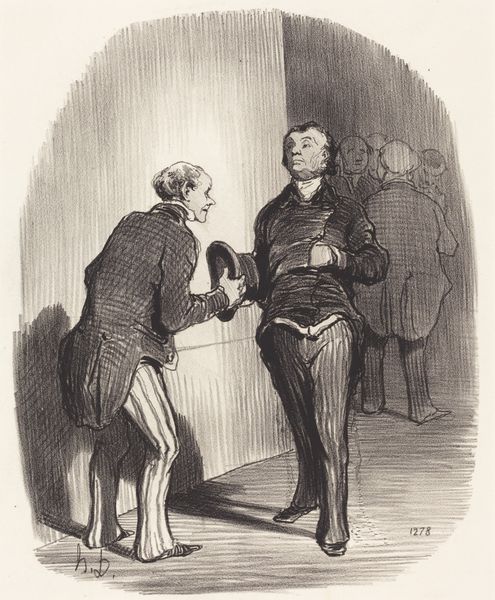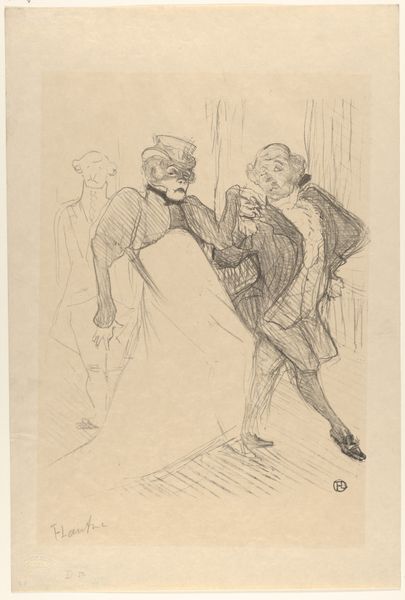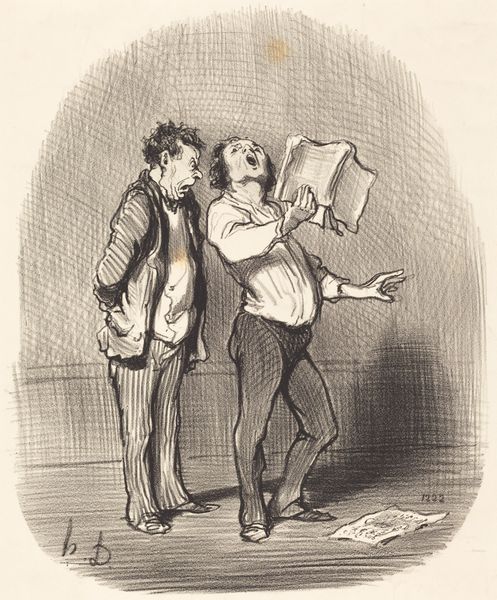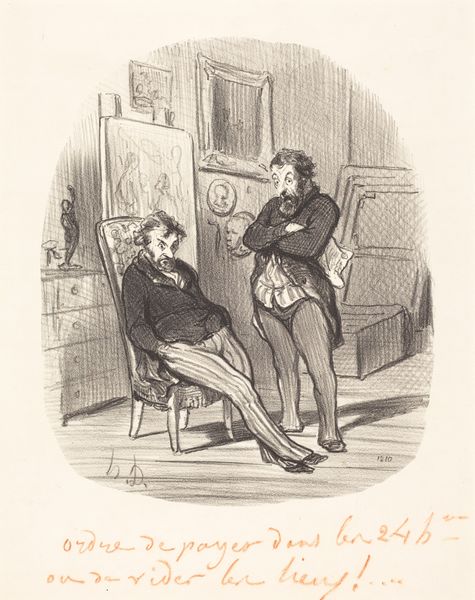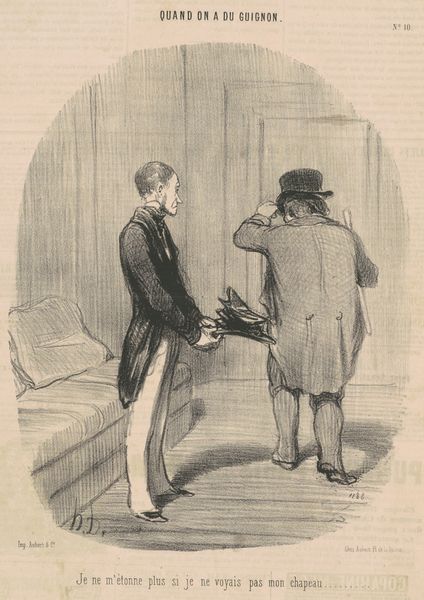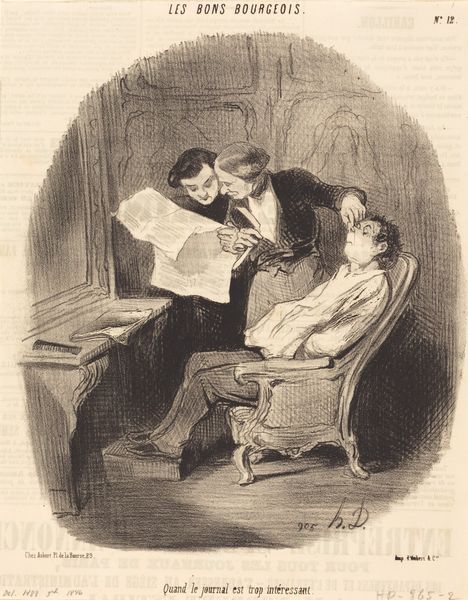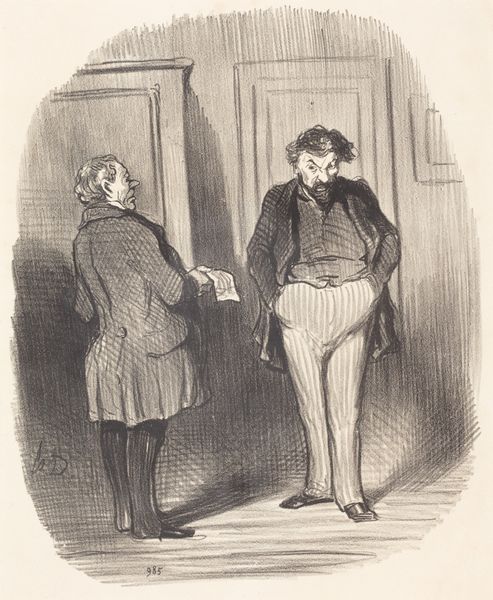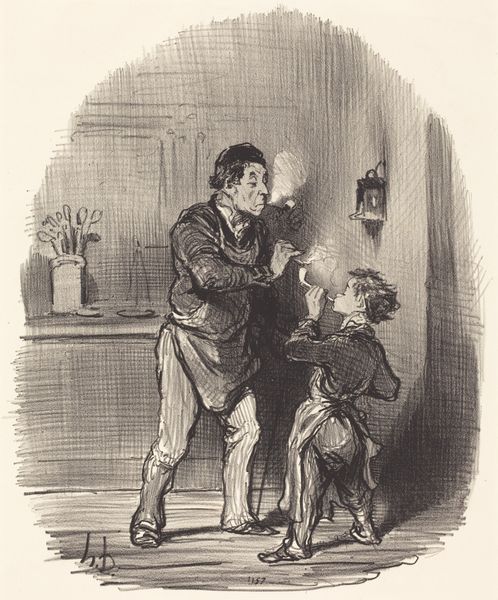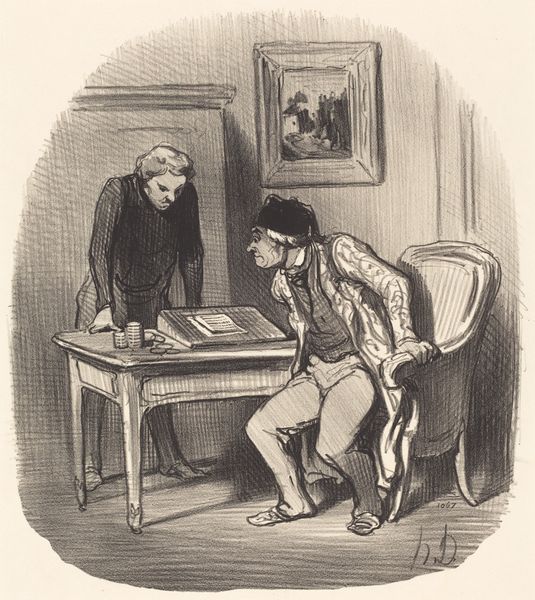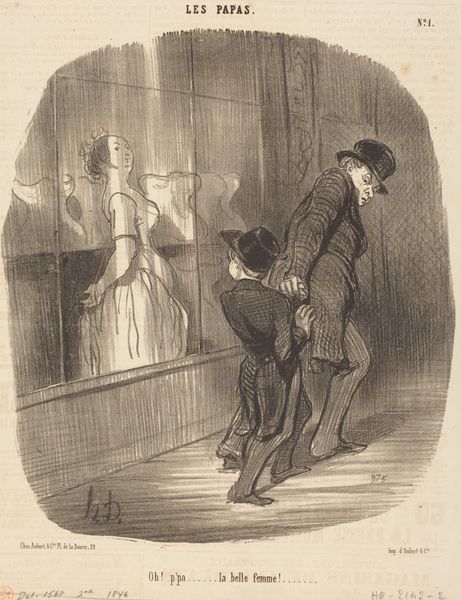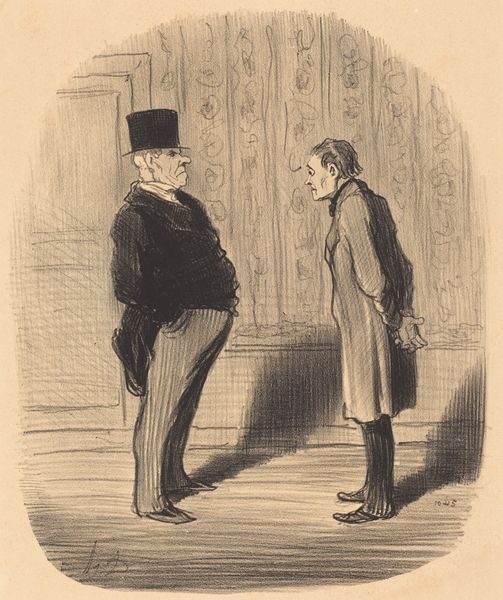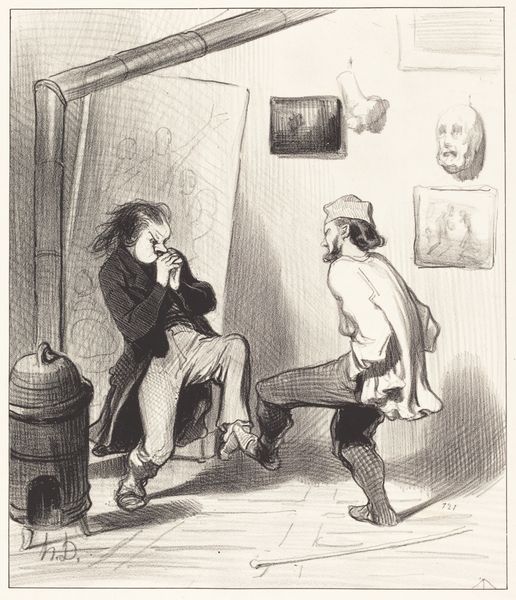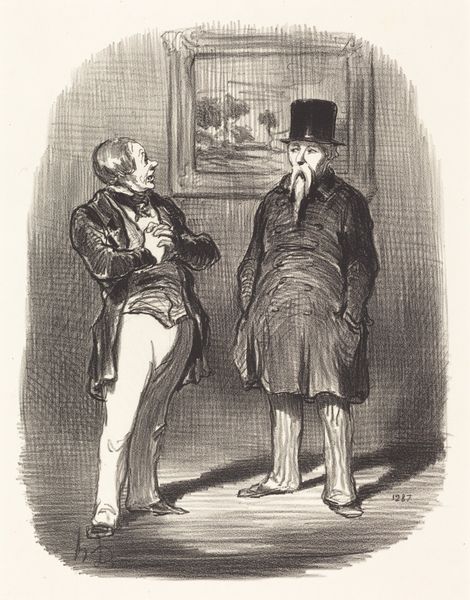
drawing, print, pencil
#
drawing
# print
#
caricature
#
pencil
#
portrait drawing
#
genre-painting
Copyright: National Gallery of Art: CC0 1.0
Curator: Looking at this work by Honoré Daumier, entitled "Mais monsieur le propriétaire, voyez...", created around 1847 using drawing and print media, I'm struck by the immediacy of the scene. It's like we're eavesdropping on a very private, possibly heated, conversation. Editor: Yes, there's definitely a tension in the air. The contrast between the casually dressed gentleman in the ornate robe, gesturing expressively, and the more formally dressed figure with his arms behind his back – almost as if he's trying to create space between them – it speaks volumes. Is it defiance? Resignation? The dark shadows certainly amplify the emotional weight of this drawing. Curator: Daumier was, of course, a master of capturing social commentary through caricature. You can almost feel the weight of the economic disparity between the two. One gets the feeling that the elaborately decorated interior represents entrenched power, doesn’t it? Editor: Absolutely. And look at how he uses the architecture itself – the fireplace, the clock – to almost dwarf the standing figures. It becomes about the system and the structures they are contained by, as much as their individual stances. And with Daumier, it is all very political: this is just one among numerous drawings offering us scenes of landlord-tenant relations at a critical moment in history, a few months before the French revolution in 1848. Curator: It makes you wonder about their dialogue. "But, Mister Landlord, see..." What is he trying to show him? The emptiness of the fireplace could signify literal lack of means. It's so minimal, yet so emotionally rich. The line work alone conveys a whole narrative. I love that. Editor: I do wonder what that narrative is; the caption offers some direction, but there is an intentional ambiguity at work in Daumier's drawings, which creates a distance, a moment of interpretation. We can feel the social pressure but we need to look more closely to understand its mechanisms, its sources of power. Curator: It leaves you thinking, long after you’ve turned away, about the eternal power dynamics at play, doesn't it? About the small stories within grand historical narratives. Editor: It does indeed, highlighting the connections between art, social commentary and politics of everyday life.
Comments
No comments
Be the first to comment and join the conversation on the ultimate creative platform.
